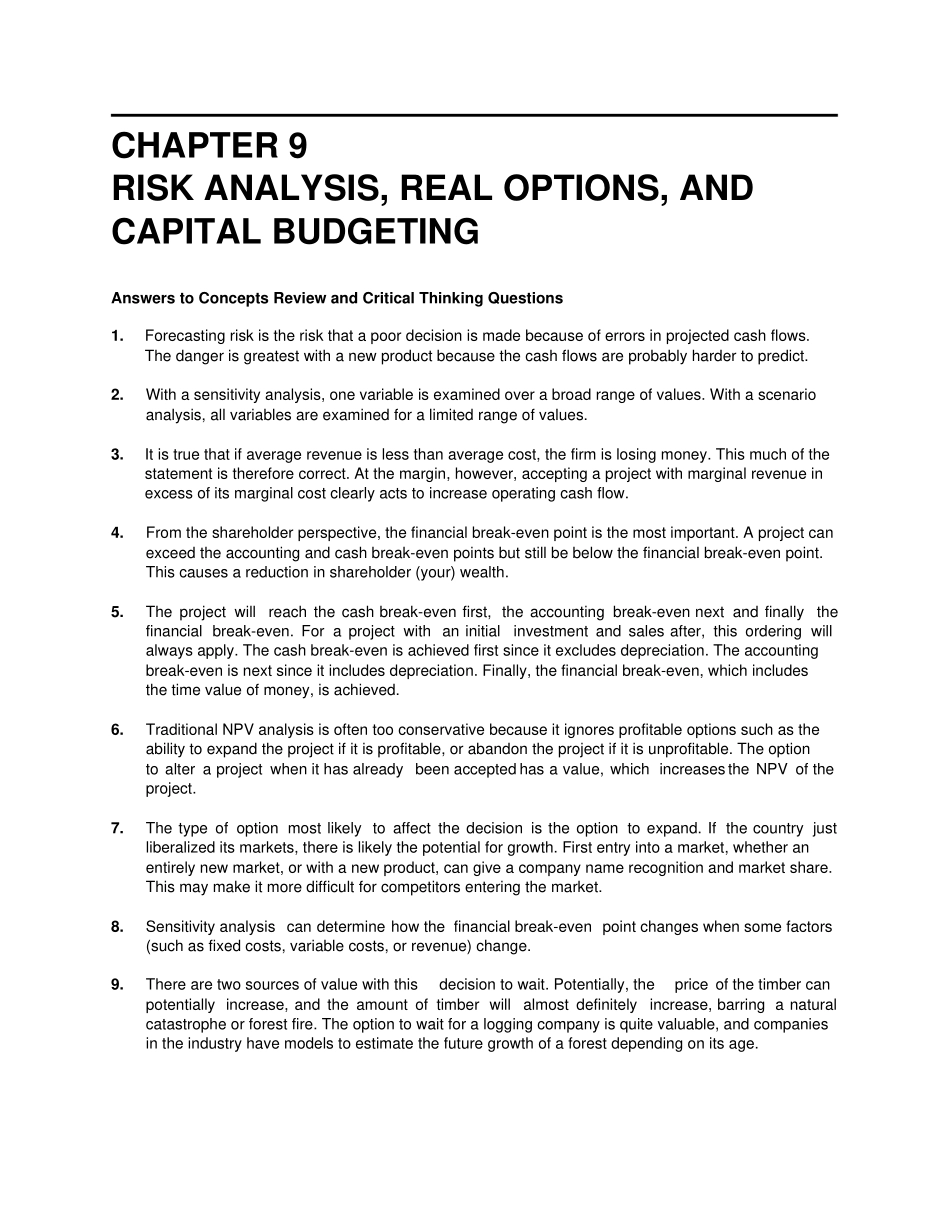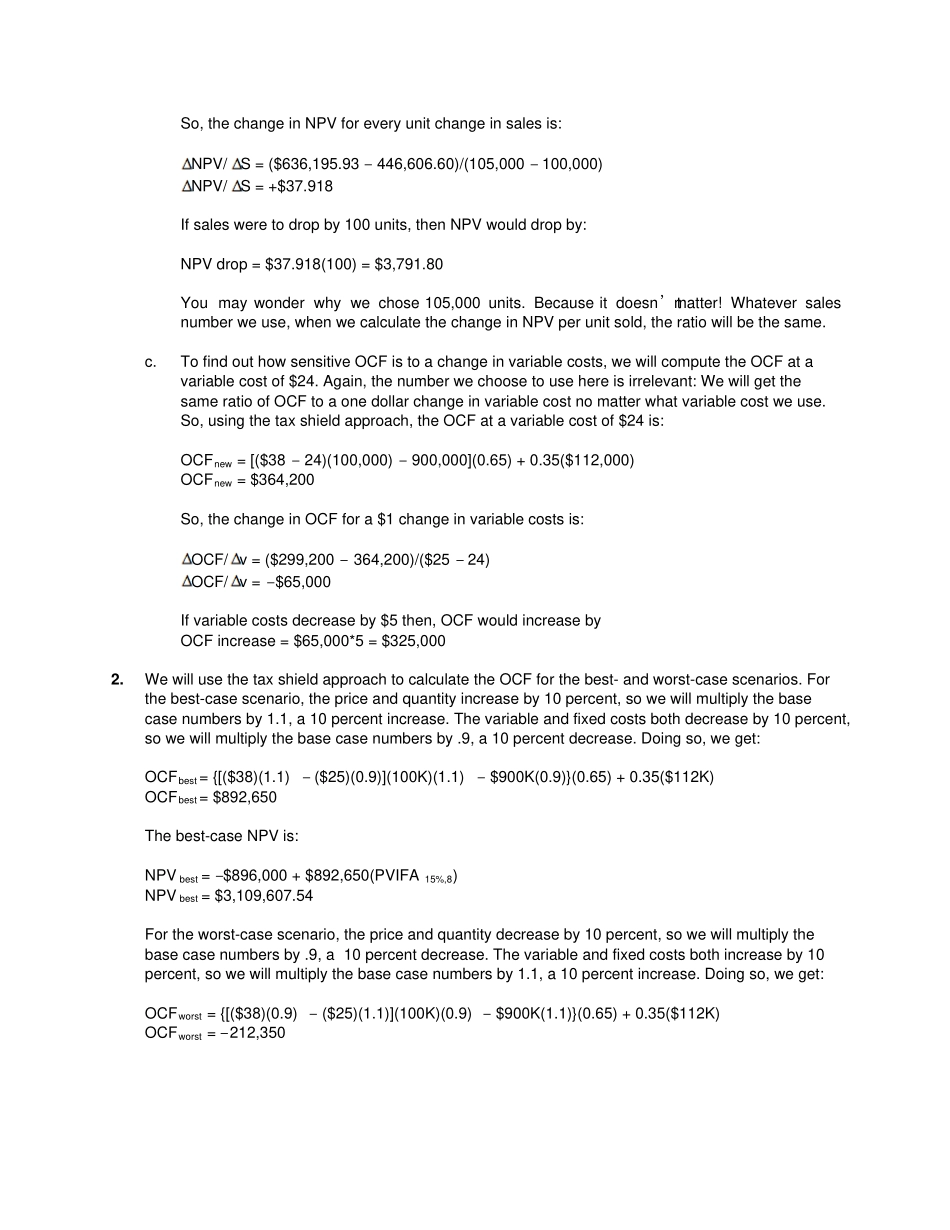CHAPTER 9 RISK ANALYSIS, REAL OPTIONS, AND CAPITAL BUDGETINGAnswers to Concepts Review and Critical Thinking Questions 1.Forecasting risk is the risk that a poor decision is made because of errors in projected cash flows. The danger is greatest with a new product because the cash flows are probably harder to predict. 2.With a sensitivity analysis, one variable is examined over a broad range of values. With a scenario analysis, all variables are examined for a limited range of values. 3.It is true that if average revenue is less than average cost, the firm is losing money. This much of the statement is therefore correct. At the margin, however, accepting a project with marginal revenue in excess of its marginal cost clearly acts to increase operating cash flow. 4.From the shareholder perspective, the financial break-even point is the most important. A project can exceed the accounting and cash break-even points but still be below the financial break-even point. This causes a reduction in shareholder (your) wealth. 5.The project will reach the cash break-even first, the accounting break-even next and finally the financial break-even. For a project with an initial investment and sales after, this ordering will always apply. The cash break-even is achieved first since it excludes depreciation. The accounting break-even is next since it includes depreciation. Finally, the financial break-even, which includes the time value of money, is achieved. 6.Traditional NPV analysis is often too conservative because it ignores profitable options such as the ability to expand the project if it is profitable, or abandon the project if it is unprofitable. The option to alter a project when it has already been accep...


